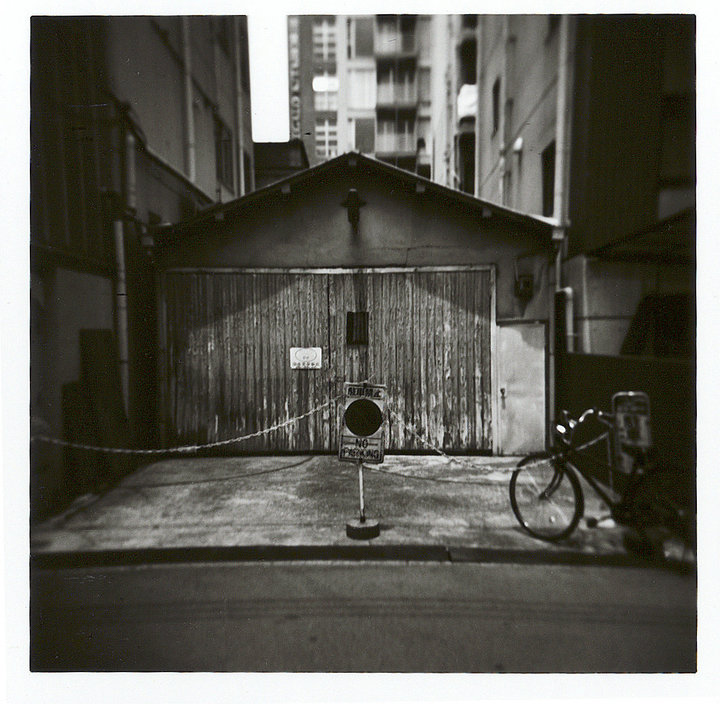"No Parking" 2009, Osaka

What always floored me about Japan was the constant renewal. To those who have never been to Japan, the stereotype is that everything is new, high-tech and innovative. While this is true of parts, the vast majority of space in Japan is a juxtaposition of new and old, traditional and untraditional, reverent and irreverent, and dirty and clean at the same time.
Take this storehouse for instance. It could very well have been there since the 1800's, serving as storage for furniture traveling along the banks of the Dotonbori River (道頓堀川). The neighborhood, Kitahorie (北堀江), in prewar times was a bustling nexus of furniture shops and carpenters, who utilized their proximity to the river as a logistics hub for their wares.
Now, almost all remnants of that era have gone, replaced with clothing stores for toddlers or hip-hop aficionados, expensive cafes, luxury apartments and convenience stores.
I like to think some descendant of the original owner inherited this storehouse and in principal, stubbornly refused to sell as everything else transformed around it. It's brittle wood entranceway slowly atrophying and cement walls flecking with age appear in stark contrast to the imposing permanent impermanence of the office and apartment buildings in the background and on the sides.
The sign hides a veiled double meaning. On the surface, it's a warning that this is private property and you cannot park your vehicle there, but underneath it represents the defiance of a generation against gentrification. Or it could be against progress, depending on how you look at it.
Whatever the true meaning, it serves as a launching point into the conversation about human history and the world we will bequeath to our progeny.
Shot in film with Holga.